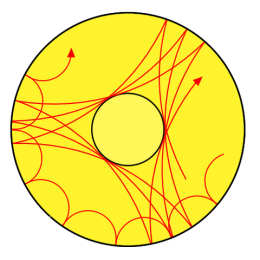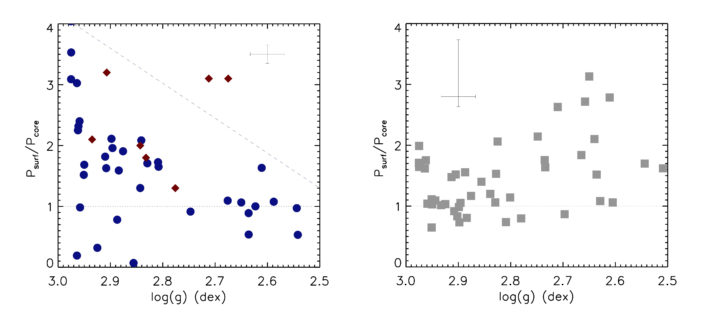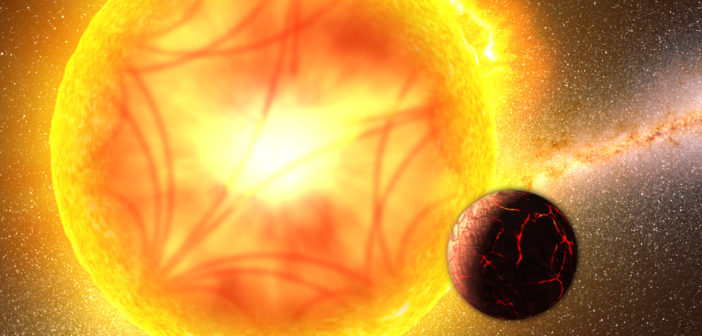Editor’s note: Astrobites is a graduate-student-run organization that digests astrophysical literature for undergraduate students. As part of the partnership between the AAS and astrobites, we occasionally repost astrobites content here at AAS Nova. We hope you enjoy this post from astrobites; the original can be viewed at astrobites.org.
Title: Core-Envelope Coupling in Intermediate-Mass Core-Helium Burning Stars
Authors: Jamie Tayar et al.
First Author’s Institution: Institute for Astronomy, University of Hawaii
Status: Accepted to ApJ
Disclaimer: The author of this astrobite currently works with the first author of today’s paper, but was not involved in the presented work.
All stars in nature rotate, including our own. However, stellar rotation over a star’s lifetime remains poorly understood. This has a profound impact on the accuracy of stellar models, which are our primary source for understanding the interiors and evolution of stars.
Today’s paper focuses on internal rotation mechanisms; specifically, how a star’s core rotates with respect to its surface. Understanding stellar core rotation can teach us a ton about internal stellar physics and long-term angular momentum transport within a star’s interior.

Asteroseismology uses different oscillation modes of a star to probe its internal structure and properties. [Tosaka]
A Problem of (Astero)Seismic Proportions
Like many outstanding problems in astronomy, this problem can be solved by obtaining more data. How do we get more data on the internal core rotation rates of stars? Through asteroseismology! By studying stellar pulsations, we can infer information about a star’s interior.
The authors of today’s paper focused on evolved intermediate-mass stars, or stars between two and eight times the mass of the Sun. These stars fall in the transition region between low- and high-mass stars, as their name implies. Like their more massive counterparts, these stars have a convective core and rotate rapidly during the main sequence — the phase of evolution where stars burn hydrogen into helium. However, like low-mass stars, intermediate-mass stars become cool red giants as they evolve. It turns out red giant stars also pulsate like the Sun, a low-mass star. By comparing how red giant stars oscillate to how the Sun oscillates, we can measure stellar parameters for red giants, such as their mass and radius.
The Core Tells All
We can additionally infer core rotation periods for red giant stars using asteroseismology, making them the perfect candidates for this study. In red giant stars, waves that propagate near the stellar core interfere with waves that propagate on the surface. By measuring surface pulsations, we can determine how the core and surface waves interact. From there, we can infer details about the stellar core, such as rotation.

Figure 1: Stellar cores spin more slowly as intermediate-mass stars evolve, as shown by this comparison between core rotation period and surface gravity. [Tayar et al. 2019]
Several of the stars in the sample also had surface rotation periods measured by a previous study. This comparison is shown in the left panel of Figure 2. This comparison suggests that as stars decrease in surface gravity (evolve), the ratio between their core rotation period and measured surface rotation period gets closer to 1 (i.e. the surface and core rotation periods become more similar as a star evolves), indicating that the stellar core can become recoupled with the surface as time goes on. The authors, however, exercise caution with such a result. When they predict surface rotation periods with stellar models, that obvious trend disappears (right panel of Figure 2) which shows that there may be a bias when selecting stars with measured surface rotation periods.

Figure 2: Surface rotation periods measured from starspot modulation show a trend when compared to core rotation periods and surface gravity (left) while surface rotation determined by models does not (right). [Tayar et al. 2019]
Evolving Stellar Astronomy
The results of this study have several implications for our understanding of stellar evolution. The evolution of core rotation periods over time suggests angular momentum transport occurs between the core of the star and the surrounding envelope. The comparison with surface rotation periods also shows some evidence for core-surface recoupling as these stars evolve. This study provides insight into internal stellar rotation that can be used to improve current stellar models and provides a new jumping off point for future work.
About the author, Ellis Avallone:
I am a second-year graduate student at the University of Hawaii at Manoa Institute for Astronomy, where I study the Sun. My current research focuses on how the solar magnetic field triggers eruptions that can affect us here on Earth. In my free time I enjoy rock climbing, painting, and eating copious amounts of mac and cheese.

1 Comment
Pingback: From astrobites: “You Spin Me Right Round: Stellar Rotation with Asteroseismology” | sciencesprings